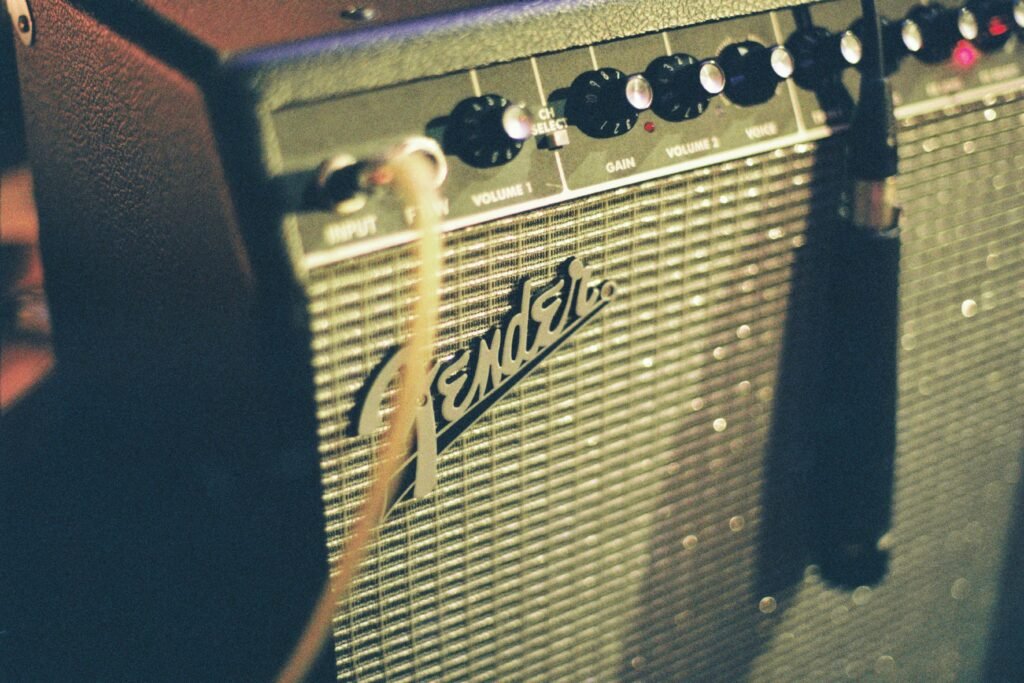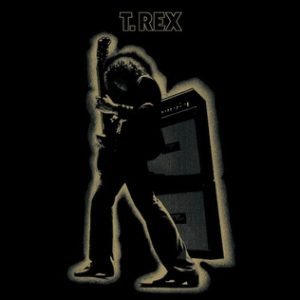When Electric Warrior arrived in 1971, it marked a turning point for T. Rex and helped define the emerging glam rock movement. Before this, Marc Bolan and his band had been rooted in a more acoustic, folk-inspired sound under the name Tyrannosaurus Rex. But with this album, Bolan made a bold shift. He brought in electric guitars, tight grooves, and a swaggering style that was new for the group and fresh for rock music as a whole.
The change wasn’t just about louder instruments or flashy looks. Bolan had a clear vision. He wanted to create something that captured the energy and style of early-70s Britain. Teaming up with producer Tony Visconti, he filled the album with lush arrangements, catchy hooks, and lyrics that flirted with fantasy and desire. Songs like “Get It On” and “Jeepster” weren’t just hits—they were part of a larger plan to bring a new kind of rock star into the spotlight. With Electric Warrior, T. Rex didn’t just evolve. They lit the fuse for a whole new sound.
Sonic Exploration

The sound of Electric Warrior is as much a part of its identity as Marc Bolan’s shimmering stage presence. Under the guidance of Tony Visconti, the album offers a polished yet warm sound that balances rock bravado with lush textures. It doesn’t feel sterile or overworked. Instead, the production gives each track room to breathe, letting the grooves and hooks settle in naturally. You can hear the fuzzed-out guitars clearly, but they never drown out the rhythm section or the occasional string flourishes that add a hint of drama.
Instrumentally, the album is a study in contrast and control. The electric guitar is front and center, delivering riffs that are simple but addictive. Bolan’s vocals often come with a slight echo, giving them a dreamlike quality, while backup harmonies—sometimes whispered, sometimes shouted—add layers of personality. Songs like “Cosmic Dancer” show off the band’s softer side, pairing acoustic strumming with sweeping strings, while tracks like “Rip Off” lean into gritty, full-bodied rock energy. There’s a balance between swagger and subtlety that gives the record depth beyond its glam surface.
Genre-wise, Electric Warrior is rooted in rock and roll, but it’s laced with funk grooves, bluesy licks, and pop sensibilities. It doesn’t stray too far from its rock base, yet it never feels boxed in either. The album played a key role in shaping glam rock, but it also flirted with early funk and soul elements, particularly in its rhythmic choices and vocal styling. That blend made it feel new, even rebellious, at the time—proof that style and substance could coexist in a single, glittering package.
Lyrical Analysis

Lyrically, Electric Warrior plays in a space between fantasy and flesh. Marc Bolan doesn’t lay out clear-cut stories or political statements—instead, he crafts a world of cryptic allure, filled with strange characters, sensuality, and cosmic flair. Themes of desire, identity, and transformation drift through the album, often expressed in surreal or symbolic language. Bolan’s words don’t always make literal sense, but they strike an emotional chord, working more like spellwork than storytelling.
Recurring motifs include cosmic imagery, animalistic traits, and playful twists on masculinity. In “Jeepster,” Bolan blends flirtation with a jungle cat metaphor, presenting seduction as both a game and a hunt. “Cosmic Dancer” explores themes of existence and mortality with haunting simplicity—“I danced myself into the tomb” is both poetic and unsettling. These kinds of lines aren’t grounded in a linear narrative, but they stick with the listener, offering emotional weight in unexpected phrases.
The lyrics throughout the album carry a mix of mystery and immediacy. They’re not overly complex, but they’re rich in texture and tone. Bolan’s delivery adds to this effect—his phrasing turns even the most abstract lines into something oddly personal. Whether he’s murmuring a tender thought or belting out a chant-like chorus, the emotional intent is always clear. The result is an album that feels both enigmatic and deeply human, inviting listeners to interpret its meanings through mood rather than logic.
Cohesion and Flow

Electric Warrior moves with a smooth, confident stride. From the moment the opening notes of “Mambo Sun” fade in, the album sets a tone that’s sultry, strange, and unmistakably self-assured. Each track builds on this vibe without breaking the spell. There’s no sharp drop-off or abrupt change in direction. Instead, the songs glide from one to the next, linked by their shared textures, tempos, and the unmistakable presence of Bolan at the center.
There isn’t a strict narrative holding the album together, but there is a clear emotional and stylistic arc. It opens with swagger and groove, dips into moments of introspection—like the ethereal melancholy of “Cosmic Dancer”—and finishes with the gritty push of “Rip Off.” This gives the record a sense of movement, even if it’s not telling a conventional story.
The themes, too, are handled with a consistent hand. Whether Bolan is crooning about cosmic love or posturing in glitter-soaked bravado, the emotional palette remains intact. The mix of fantasy, sensuality, and self-mythology never feels out of place. Each song contributes a different shade to the album’s atmosphere, but all serve the same vision. This cohesion is what helps Electric Warrior feel not just like a collection of songs, but like a complete and intentional work of art.
Standout Tracks and Moments
Several tracks on Electric Warrior rise above the rest, not because the others fall short, but because these songs crystallize the album’s charm and innovation.
Get It On
“Get It On” is the most immediate standout. Its hypnotic groove, slinky guitar line, and infectious chorus made it an instant hit—and for good reason. It encapsulates everything Marc Bolan did best: sensual energy, tight musicianship, and a flair for the theatrical. The way he delivers the phrase “you’re dirty and sweet” is both seductive and tongue-in-cheek, a perfect summary of the album’s attitude.
Cosmic Dancer
“Cosmic Dancer” offers a different kind of magic. Opening with gentle acoustic strums and swelling strings, it feels like a whispered secret compared to the boldness of other tracks. Bolan’s line “I danced myself into the tomb” captures a sense of existential playfulness—part joy, part melancholy. This song is one of the album’s emotional anchors, showing that T. Rex could do more than strut; they could reflect, too.
Jeepster
Another highlight is “Jeepster,” with its bluesy stomp and playful lyrics. It showcases Bolan’s knack for turning simple phrases into memorable hooks. The sudden shifts between verses and choruses, punctuated by tight percussion and handclaps, make the track feel alive and mischievous.
Life’s a Gas
One of the most striking moments on the album comes near the end with “Life’s a Gas.” It’s a brief, tender song with a disarming sense of honesty. There’s a sweetness in Bolan’s voice that cuts through the glam surface and hints at something more vulnerable. It’s this balance—between sparkle and sincerity—that gives Electric Warrior its lasting power.
Artistic Contribution and Innovation

Electric Warrior didn’t just fit into the early ’70s rock landscape—it helped reshape it. At a time when progressive rock was growing more complex and hard rock more aggressive, Marc Bolan carved out a new lane that merged simplicity with style. He wasn’t chasing virtuosity or grand concepts. Instead, he embraced immediacy, groove, and personality, laying the groundwork for what would soon be known as glam rock.
The album pushed genre boundaries by blending the raw energy of early rock and roll with the polish and theatricality of pop. There was funk in the rhythms, blues in the guitar work, and a glam sensibility in the lyrics and delivery. It wasn’t just the sound that was fresh—it was the attitude. Bolan’s embrace of androgyny, fantasy, and sexual ambiguity opened the door for artists like David Bowie, Roxy Music, and even Prince to experiment with identity and image in new ways.
In terms of production, Tony Visconti’s layered approach gave the songs more dimension without losing their immediacy. The decision to pair gritty guitar riffs with orchestral strings and saxophone solos wasn’t common at the time, especially not in music that still hit the charts. That fusion helped elevate Electric Warrior beyond its rock roots, making it feel both accessible and artful.
More than anything, the album proved that style could be substance. Bolan turned swagger into a musical language and showed that pop music didn’t need to apologize for being fun, sensual, or strange. Electric Warrior was more than a collection of songs—it was a cultural statement dressed in glitter and leather.
Closing Thoughts

Electric Warrior stands as a defining statement—not only in Marc Bolan’s career but in the evolution of rock music itself. Its strengths lie in its seamless blend of style and substance, its confident embrace of glam aesthetics, and its ability to balance catchy hooks with atmospheric depth. Every track feels purposeful, every lyric drips with character, and the production wraps it all in a sound that still feels alive decades later.
If the album has any weakness, it’s that its surreal lyrics might not connect with everyone on first listen. Bolan wasn’t writing for clarity; he was writing to cast a spell. For those open to that kind of experience, Electric Warrior rewards with layers of charm and mood that reveal themselves over time.
This album didn’t just help shape glam rock—it gave it a voice, a face, and a blueprint. It showed that rock could be both playful and powerful, mysterious yet inviting. For fans of music that thrives on personality and reinvention, it remains essential listening.
Official Rating: 10/10
This perfect score isn’t about technical perfection. It’s about legacy, innovation, and emotional resonance. Electric Warrior captures a moment in time with precision and flair, while also influencing generations of artists who followed. It’s bold, beautiful, and utterly unique—an album that still sounds like the future.
